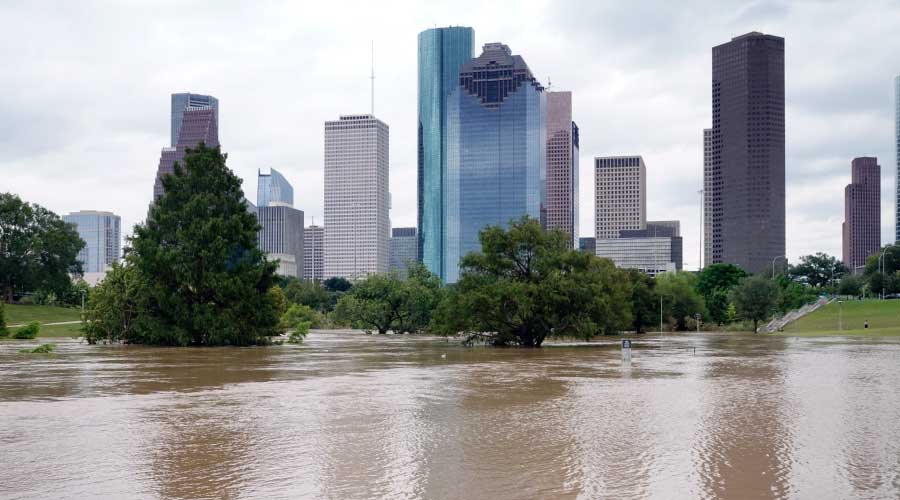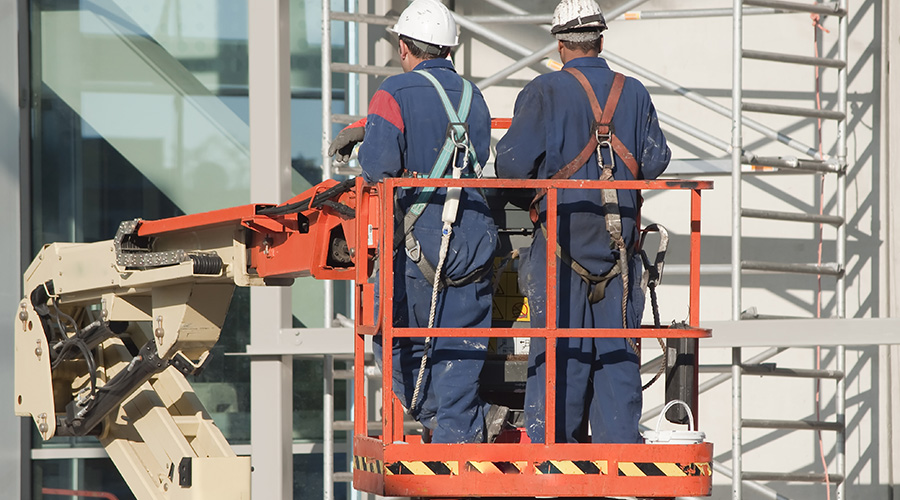Prepare for Emergencies by Networking with First Responders
The 911 call goes out. In minutes the fire engine or police cruiser tears into the parking lot. First responders rush to the building, and find — what? Crucial information at the ready? Keys on hand? A facility executive who understands that the incident commander is now in charge?
Emergency response planning goes beyond writing a plan and conducting drills, though these are crucial aspects of preparedness. Even as pre-incident emergency response planning tends to focus on getting people out, facility executives working towards safe-guarding their facilities should also think about who needs to get in during an emergency. Doing everything possible to make the transition of control as smooth, swift and informed as possible will go a long way to improving the outcome of any emergency situation.
Being a good partner for local emergency response agencies starts with becoming more than just a street address to them. It also includes providing easy access into the facility, knowing the facility and its systems inside and out and acknowledging when to get out of the way to let the pros handle the situation.
Getting to Know You
Few facilities are islands reliant only on their own resources. For this reason it is a good idea to meet people within the community agencies who will support the facility in an emergency, before an emergency occurs.
“Too often, the first interface is during that 911 call,” says John Welling, chairman of the National Fire Protection Association’s 1620 committee on pre-incident planning, associate director of environmental health and safety with Bristol-Myers Squibb and a municipal fire chief in New Jersey. Not knowing the name of the fire chief doesn’t mean the fire department won’t come out to fight your fire. But being on a first name basis could make things smoother during an emergency. “It helps with the interaction so that we’re not in education mode,” Welling says.
In a small town, you might be able to meet up with the fire chief over breakfast, but it doesn’t have to be that intimate of an interaction. In larger municipalities, facility executives could reach out to an information contact at the fire prevention bureau.
At Bristol-Myers Squibb, where he is also chief of emergency services, Welling says he tries to meet with his emergency response contacts on a quarterly basis to refresh them on changes that have happened to his facility or touch on any areas that need special attention. Though emergency responders are constantly pulled in a hundred different ways in municipalities, even in New York City local fire engine companies are expected to physically visit the buildings for which they are responsible once or twice a year, he says.
In addition to updating the police or fire departments on facility systems and hazards, another benefit of this frequent and more personal interaction is that facility executives can get to know the limitations of the first responder organizations in regards to their facility. Hazardous materials is one area where local resources might not be available.
“The U.S. has gone a long way in putting regional resources in place to respond to hazmat situations, but that kind of response might not be available at the municipal level,” Welling says. “You may have to wait an hour for that resource to arrive. You may have to have an on-site or contracted response team for the particular situation at your site.”
When working to become familiar with local first responder organizations, facility executives can also look to broader community organizations for feedback. In Milwaukee, for instance, a downtown security network meets monthly.
“It offers a free exchange of ideas and questions between building owners and first responders,” says Mark Owen, battalion chief with the Milwaukee Fire Department. In major cities, there is often an emergency management office — an Urban Area Security Initiative office, part of the Department of Homeland Security — that could provide information on such meetings.
Another way to establish a more collaborative relationship with the municipality is to offer up your facility for a regional operational drill. There isn’t much opportunity to practice certain kinds of events, such as mass casualty or bomb threats. Even fire calls might not be as frequent as might be assumed. For example, in Las Vegas the fire department responds to around 85,000 calls a year. Of those, only 2,000 are fire calls, says David Klein, deputy fire marshal with the City of Las Vegas Fire and Rescue.
It is the responsibility of the first responder organization to have a plan for an emergency in the buildings they serve, but offering your facility for training time can really affect the quality of the response, Klein says.
“It’s not something you have to do over and over again,” he says. “Just once, to give them a chance to practice.” Plus, helping to keep first responders well-trained is good community PR for the hosting facility.
In Case of Emergency
The best thing facility executives can do during an emergency to be most useful to first responders is know their facility. Know how to locate and operate building system controls. Know where utility shut offs, like power and gas, are located.
“Have someone meet the first responders who can tell them what’s going on,” Welling says. A small emergency response team should be in place that is familiar with the HVAC system, can reroute or de-energize systems, has building plans, knows how to shut off the sprinkler system to minimize water damage, and so forth.
“There’s no expectation or desire to have the facility executive hand over the building and completely step back,” Welling says. “They know the building best and need to provide that insider information.” For example, with a chemical company, the fire team might know how 10 of the chemicals react and how to extinguish them, but not the other 40,000, he says.
Another thing to consider is that emergencies have a funny way of happening at odd hours when the facility might not be staffed. Providing information and access to first responders even when the facility is unmanned is helpful. More and more fire engine companies have mobile display terminals in the truck where they can download information on the building while en route to an incident, Welling says. Facility executives should work with municipal contacts to find out what information in what format would be most useful.
“You shouldn’t assume they know everything they need to know,” he says. For example, aerial maps of the building could be labeled with fire hydrant locations, which are hard to see in the dark.
In some municipalities, this kind of information sharing is required by ordinance. If not, facility executives can always volunteer to provide it.
Another method to provide information to first responders is key vaults. The individual vaults (from the same manufacturer) are keyed to a master key held by the first responder department. The vaults are mounted on the outside of the facility and can contain all the necessary keys, building plans, MSDS sheets and information on shutting off systems. That way first responders have as much information as possible to respond.
“They can get in without having to bash in your $12,000 door. It’s nice to have a key,” Welling says.
Get Out of the Way
In an emergency, minutes matter. The last thing facility executives want to do is inadvertently hamper the efforts of first responders. There are a few things to be aware of to be part of the solution, instead of part of the problem.
First off, facility executives should leave rescue or suppression operations to the experts. When the situation quickly outpaces their abilities, they can become part of the incident, Klein says.
“Then you’re putting yourself at a lot of risk,” he says, though he sympathizes with the impulse to help. “It’s hard when you want to do the right thing not to do the right thing.”
Another thing to realize is that the facility executive answers to the incident commander, not the other way around. Sometimes facility executives get in the way of first responders by having an attitude that they’re in control and can decide how things will happen, Welling says.
“For example, people don’t want to shut down computer rooms for anything,” he says. Once powered down, computers become a simple fire to fight. “But people are hell bent not to shut them down because of loss of data and how long it will take to get the system back up. A lot of facilities don’t have hot spots in place where they can just switch over functions.”
Kurt Drezek, a lieutenant with the Milwaukee Police Department and program manager of the City of Milwaukee Office of Homeland Security, says he’s had building owners ask police to go back into burning buildings to rescue hard drives.
“I can’t stress enough the continuity of operations plan so the business will survive the disaster,” Drezek says. Not only is it good business practice, but it helps in an emergency. “It allows people to have the peace of mind to get up and leave. They know the work will survive whether the facility is there or not. If not, they could linger, trying to salvage what they can.”
Drezek recalls one business owner who was involved in an industrial accident. His hand was crushed, but he was more concerned with directing his staff on how to continue to fulfill an order than listening to the EMTs who were trying to help him. It’s an extreme example, but failing to create a business continuity plan prior to an emergency could be bad for everyone involved.
In the end, it’s not the facility executive’s job to be a firefighter or police officer. Ultimately, the municipal emergency response organizations are responsible for being at least somewhat familiar with the facilities they protect and prepared to address the hazards they present. But as the individual responsible for the well-being of the facility, it makes sense for facility executives to make sure all possible has been done to prepare. The moment after placing a 911 call is no time for regrets.
Related Topics:













